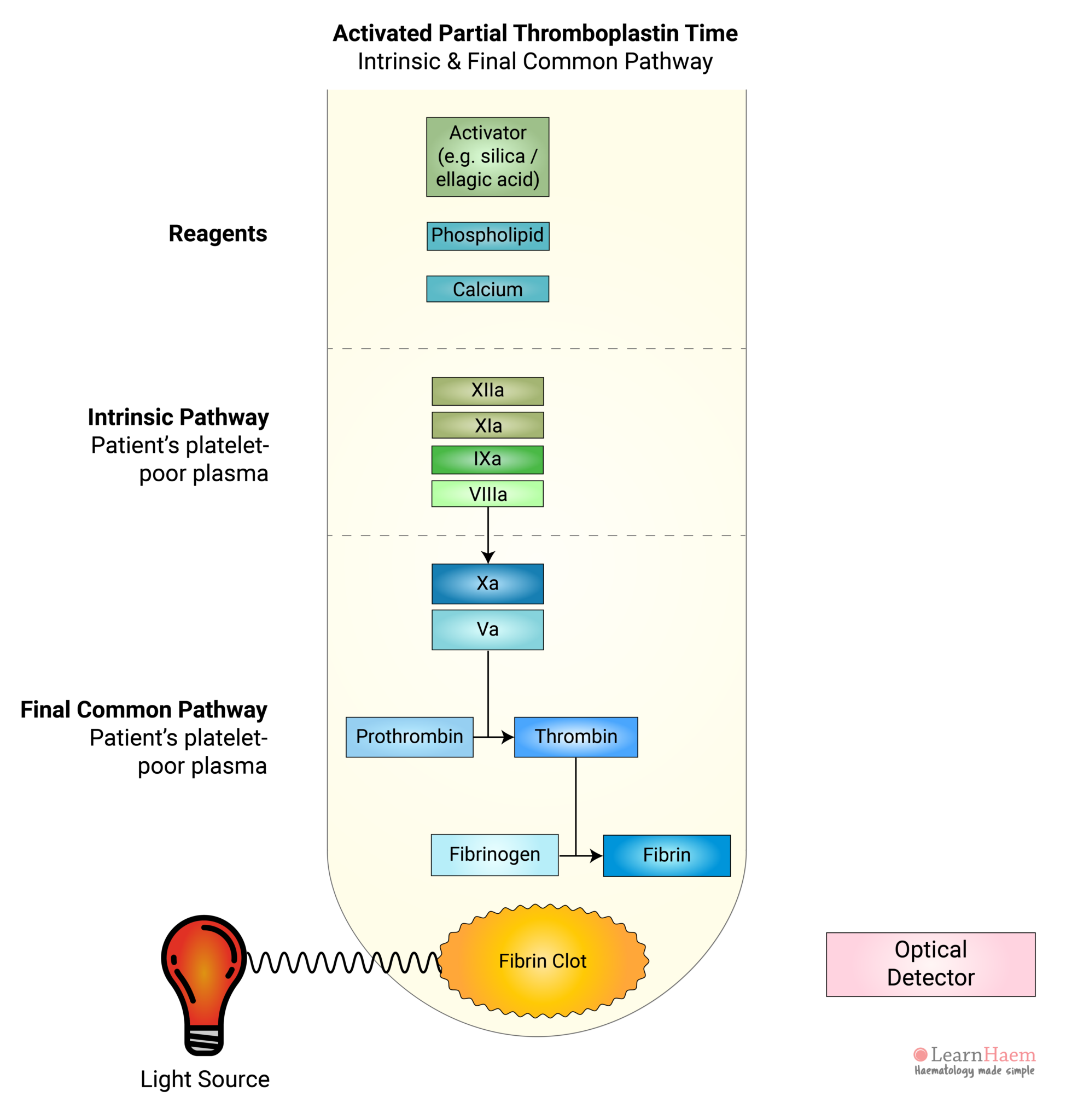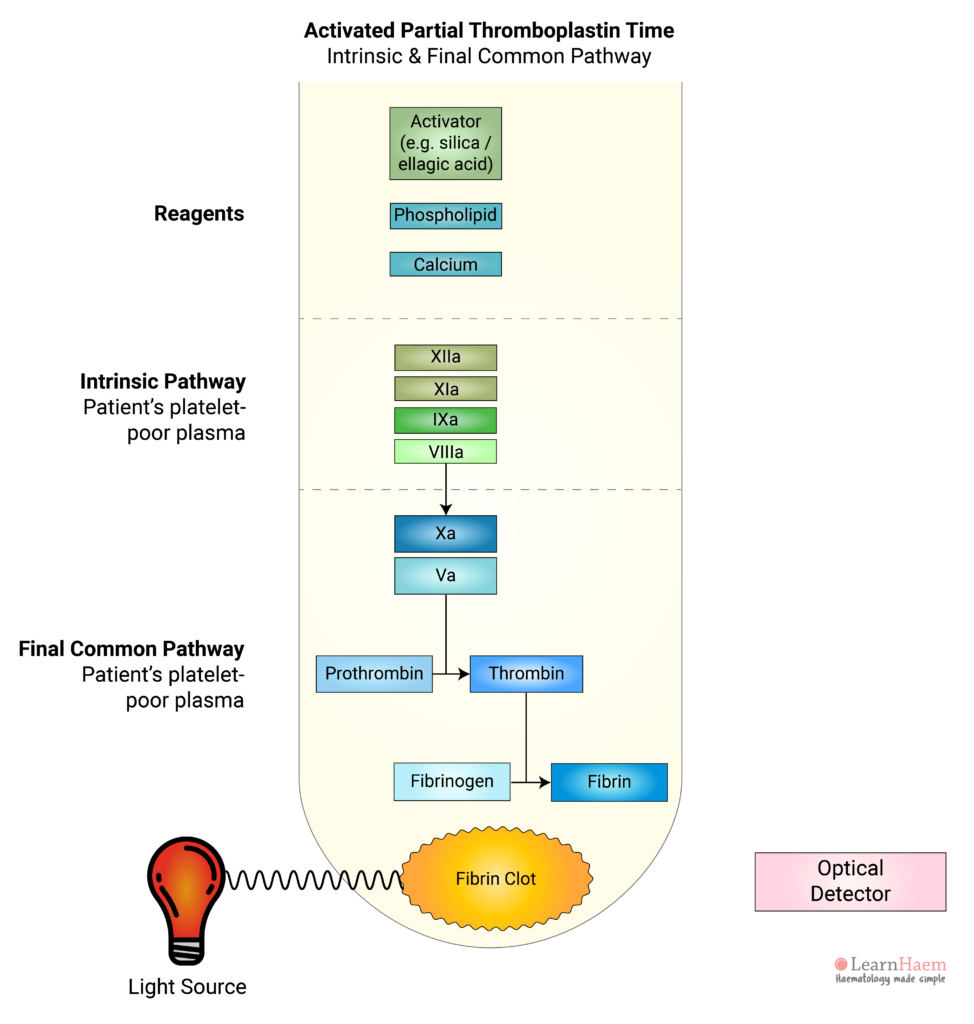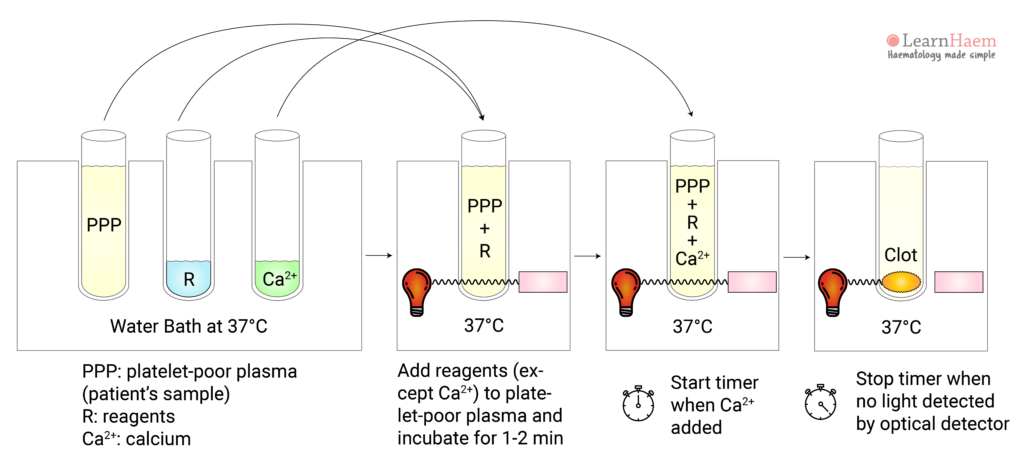The APTT assay is a basic coagulation tests which is sensitive to factor deficiencies and inhibitors of the intrinsic and final common pathway.
How The Tests is Performed
The APTT and PT assays work on the principle that plasma is fluid and translucent, while a clot is firm and opaque. There are variations on the assay which involve light transmittance and motion detection. The version described here involves light transmittance.
Patient platelet-poor plasma (PPP), reagents (R, phospholipid and contact activator for the APTT) and calcium are incubated separately at 37°C.
The reagents are then added to platelet-poor plasma at allowed to equilibrate at 37°C.
Calcium is then added, which marks the point where timing starts.
A light source and optical detector are used to determine when a clot forms. Prior to the addition of calcium, there is no activation of the clotting cascade. Light hence passes freely through the sample and is detected by the optical detector.
However, after calcium is added, the clotting cascade is activated and a clot forms. The clot is opaque, absorbing light and blocking its transmission to the optical detector. At this point, the timer is stopped.
The time taken for the clot to form, in seconds, is the APTT.




Leave A Comment